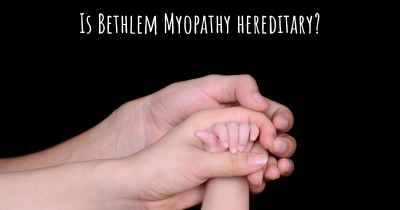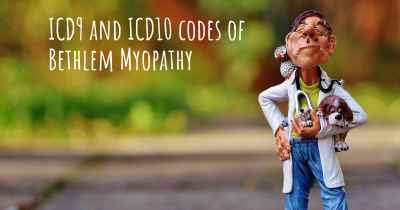Living with Bethlem Myopathy. How to live with Bethlem Myopathy?
Can you be happy living with Bethlem Myopathy? What do you have to do to be happy with Bethlem Myopathy? Living with Bethlem Myopathy can be difficult, but you have to fight to try to be happy. Have a look at things that other people have done to be happy with Bethlem Myopathy

Living with Bethlem Myopathy
Bethlem Myopathy is a rare genetic disorder that affects the muscles and connective tissues in the body. It is characterized by muscle weakness, joint stiffness, and contractures. Living with Bethlem Myopathy can present various challenges, but with the right strategies and support, individuals can lead fulfilling lives.
1. Seek Medical Care and Support
It is crucial to establish a strong medical support system when living with Bethlem Myopathy. Consult with a healthcare professional who specializes in neuromuscular disorders to receive an accurate diagnosis and develop a comprehensive treatment plan. Regular check-ups and monitoring of symptoms can help manage the condition effectively.
2. Physical Therapy and Exercise
Physical therapy plays a vital role in managing Bethlem Myopathy. A physical therapist can design an exercise program tailored to your specific needs, focusing on improving muscle strength, flexibility, and mobility. Regular exercise can help slow down the progression of muscle weakness and maintain overall physical well-being.
3. Assistive Devices and Mobility Aids
Depending on the severity of muscle weakness and joint stiffness, assistive devices and mobility aids may be necessary to enhance independence and mobility. These can include braces, splints, canes, walkers, or wheelchairs. Working with an occupational therapist can help determine the most suitable assistive devices for your specific needs.
4. Pain Management
Bethlem Myopathy can cause chronic pain due to muscle and joint problems. Pain management techniques such as medication, physical therapy, heat or cold therapy, and relaxation techniques can help alleviate discomfort and improve quality of life. It is important to communicate openly with healthcare professionals about your pain levels and seek appropriate treatment options.
5. Adaptive Strategies for Daily Living
Living with Bethlem Myopathy may require adapting daily activities to conserve energy and minimize strain on muscles and joints. Energy conservation techniques such as pacing activities, using proper body mechanics, and utilizing assistive devices can help reduce fatigue and prevent injury. Occupational therapists can provide valuable guidance on adapting your home and work environments to accommodate your needs.
6. Emotional Support and Mental Well-being
Living with a chronic condition like Bethlem Myopathy can have a significant impact on mental well-being. It is essential to seek emotional support from friends, family, or support groups who understand your experiences. Counseling or therapy can also be beneficial in managing the emotional challenges that may arise. Taking care of your mental health is just as important as managing the physical aspects of the condition.
7. Stay Informed and Engage in Research
Keeping up-to-date with the latest research and advancements in Bethlem Myopathy can empower you to make informed decisions about your treatment and care. Stay connected with patient advocacy groups and participate in clinical trials or research studies if possible. By actively engaging in research, you contribute to the collective knowledge and potential future treatments for Bethlem Myopathy.
8. Supportive Relationships
Building and maintaining supportive relationships with family, friends, and healthcare professionals is crucial when living with Bethlem Myopathy. Surrounding yourself with understanding and compassionate individuals can provide the emotional support and encouragement needed to navigate the challenges of the condition. Open communication and education about Bethlem Myopathy can help loved ones better understand your needs and offer appropriate support.
Living with Bethlem Myopathy may present unique challenges, but with a comprehensive approach that includes medical care, physical therapy, assistive devices, pain management, adaptive strategies, emotional support, and staying informed, individuals can lead fulfilling lives. Remember, you are not alone, and there are resources available to help you along your journey.
Posted Oct 21, 2017 by IGNACIO 3050








